Lingering Questions
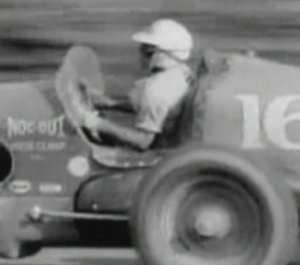
A close up look at Robson piloting the Noc-Out Hose Clamps Special during the Labor Day event at Lakewood from the newsreel footage.
With as many questions as were answered over the last few months, there are just as many more questions that came to light or that still linger.
First and foremost has to be how the initial situation between DeVore and Robson occurred.
Two items first and foremost had to have played a part in the accident. The first was the dust, an old enemy of drivers at Lakewood. By the time this race was run, the clay surface of the track had been pounded so much by high-powered racecars that it was like talcum powder. Just a few laps into the race, the drivers and fans vision would be obscured by the think orange clouds.
The second item was the color of DeVore’s car. T.C. Chambers gave us this revelation when he informed us that DeVore’s car was Halloween orange. That would have made his car virtually invisible in the dust.
It’s also been asked why DeVore moved his car down to the inside when he had trouble. The old rule on a dirt track was to move up to the outside, on the cushion, where nobody would be running.
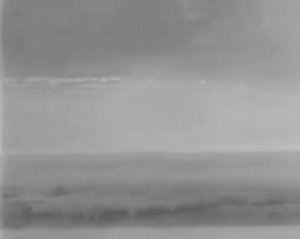
Another look at the backstretch from the newsreel shows the track virtually obscured by the dust.
One possibility is that, given that at Lakewood the faster cars would be running in the middle to the outside of the straightaways, that AAA officials told drivers in the pre-race driver’s meeting to move to the inside if they had trouble. By doing so, all the drivers would have known to be wary of running the low lane. Mind you, this is pure conjecture.
As to Robson, how did he not know DeVore was in that low lane after passing his ailing racer several times over the past 15 laps?
Chambers, who raced his motorcycle in AMA events at Lakewood, believes that Robson could have become disoriented in the dust, and didn’t realize he had drifted down partially into the low lane coming off of the second turn.
Chambers also points to the fact that Atlanta was in the grip of a heat wave, with temperatures reaching to 100 degrees on that hot Labor Day afternoon. Add to that the fatigue factor of wrestling one of those heavy cars around the grueling one-mile track, and, given the other conditions, you have a perfect setting for disaster.
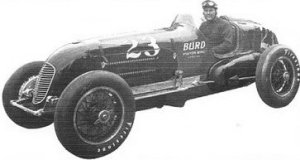
The car Robson was killed in at Lakewood was the same one that Floyd Roberts piloted to victory at Indianapolis in 1938. Roberts would also lose his life in this same car in the 1939 Indy 500.
Another question that comes up frequently is that of the fate of the Robson and Barringer cars. Racecars back then weren’t as disposable as they seem to be today, leading owners to repair and race them again even after a driver was killed behind the wheel.
Robson’s racer, in fact, was such a car. It had been piloted to victory in the 1938 Indianapolis 500 by Floyd Roberts as the Burd Piston Ring Special. Roberts would crash to his death in the same car in the 1939 Indy 500. The car was rebuilt, and raced by owner Cliff Bergere in the 1940 Indy 500. Robson would race the car at Lakewood in the Noc-Out Hose Clamps livery.
Following the Labor Day crash in 1946, Bergere reportedly said that after two of his friends had been killed piloting the car, he would destroy it. He apparently made good on his promise.
Of note is the existing Noc-Out Hose Clamp Special that is on display at the Indianapolis Motor Speedway Hall of Fame museum. That car is not the Robson car, but rather the 1941-winning car, which was also raced under the Noc-Out livery.
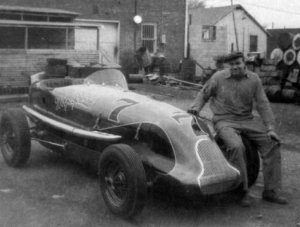
Ervin Wolfe and the repaired Wolfe Special in 1947. Photo from the Floyd Seago collection
Barringer’s car was also a former 500 winner. Piloted as the Gilmore Special by Wilbur Shaw, the car visited victory lane in 1937. The car was later driven by Mauri Rose, Billy DeVore and Frank Wearne in various 500s.
Following Barringer’s death, the car was apparently repaired by owner Ervin Wolfe, as evidenced by photos from 1947 of Wolfe and the car from the collection of Floyd Seago. The car was apparently raced by Paul Russo in 1947, with photos of Russo in the car matching those taken by Seago. The car was last raced in it’s original configuration later that year, and, with a new look, was raced by Joie Chitwood in 1948.
The Wolfe Special met it’s end in a practice crash that took the life of driver George Metzler prior to the 1949 Indy 500.
Finally, what happened to the other men involved in the accident?
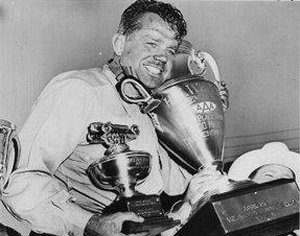
Ted Horn would lose his life two years after that fatefull Labor Day race at Lakewood in a crash on the mile track at DuQuoin, Illinois.
Billy DeVore recovered from his injuries, and would return to race again, driving for William Schoof, Pat Clancy (in Clancy’s famed six-wheeled Offenhauser at Indianapolis) and others. His career spanned 20 years, with his last start at Indianapolis coming in 1954. He would pass away in August of 1985.
Bud Bardowski suffered only cuts and bruises in the crash. He would race again two weeks later at the Indiana State Fairgrounds, finishing 13th, and would run later at the Milwaukee Mile and at Good Time Park. He passed away in April of 2000.
Ted Horn, one of the most popular and successful racers of his day, would go on to win the National Championship in 1946, 1947 and posthumously in 1948. Horn would lose his life in a second lap crash during an event on the mile long track at DuQuoin, Illinois in October of 1948.
